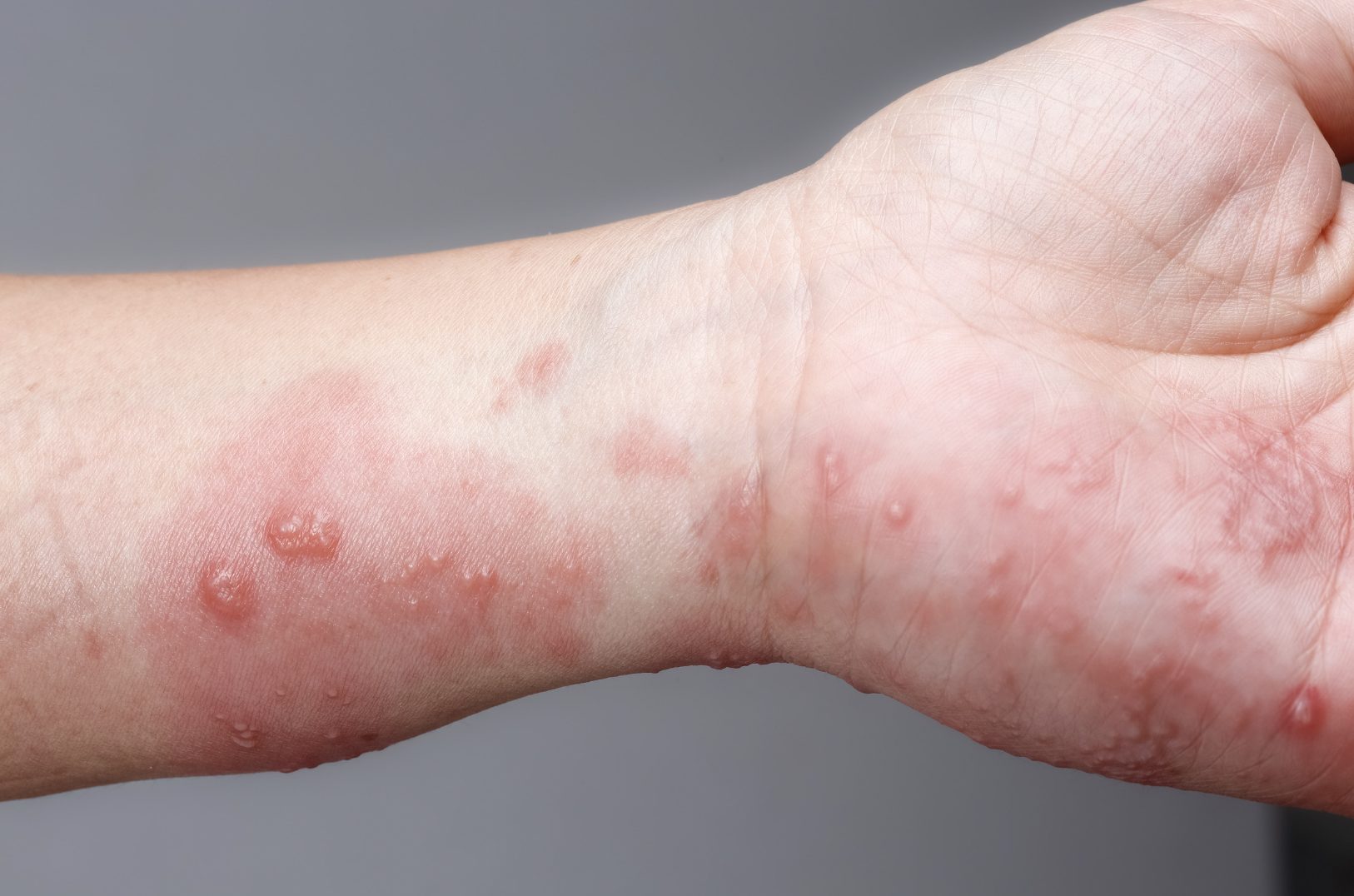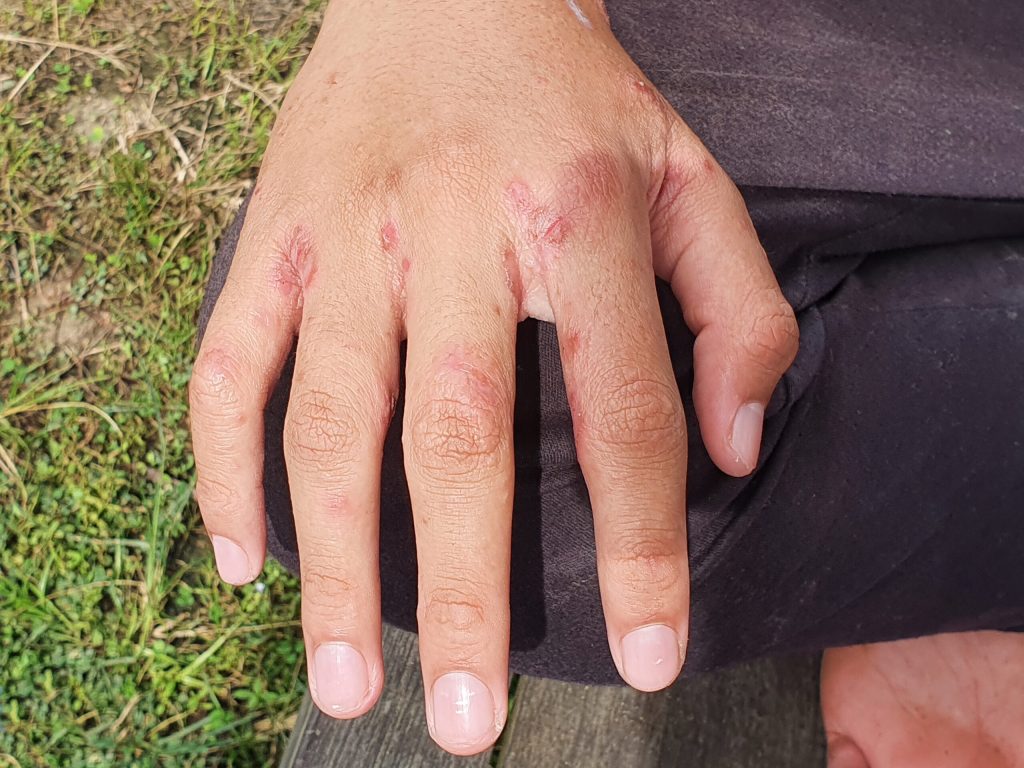
What is scabies?
• Scabies is a common contagious and debilitating infestation in which allergy to the
saliva, eggs, and excrement of the mite Sarcoptes scabiei var. hominis causes
extraordinarily intense itching. Scabies may be an endemic problem in resource-poor
settings.

• The mites mate on the skin surface, and the ♂ (0.2mm long) dies. The ♀ (0.4mm
long) burrows into the epidermis and lays eggs (1–3/day) for 4–6 weeks (see Fig. 8.1).
These hatch in 3–4 days and, within 10–15 days, reach adulthood.
• although the patient may have only 10–12 adult mites, itch is widespread, severe,
and distressing.
• Overwhelming infestation in a debilitated, old, or immunocompromised patient
(>1000 mites per person) is known as crusted (Norwegian) scabies.
• Scabies is transmitted by close skin-to-skin contact (for at least 15–20min), e.g.
sharing a bed, holding hands, sexual intercourse.
• The mites cannot jump or fly, but ♀ can burrow up to 2.5cm/min.
• The good news is that scabies can be cured—so it is a rewarding diagnosis to make.
What should I ask?
• Where is the itch? The head and neck are usually spared, except in the very young,
the very old, or the immunosuppressed.
• What is the itch like? The itch is severe (some patients liken the itch to pain) and
made worse by warmth, e.g. at night.
• Is anyone else itching? Carers, family contacts, including grandparents, and sexual
contacts.
• Not everyone with an infestation will be itchy. Sensitization takes 2–6 weeks.
Crusted scabies may not be very itchy.
• Is a close contact being treated for any skin complaint (scabies is often missed)?
Granny with ‘hand dermatitis’ may be the index case.
• Enquire about other causes of itching, e.g. drugs.
• What treatment has been provided? Treatment fails if all those infested (i.e. all close
contacts) have not been treated at the same time.